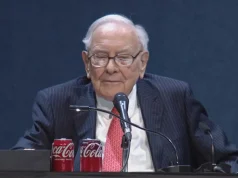In the evolving landscape of today’s corporate arena, one of the most vibrant and nuanced threads is that of generational diversity. At The Work Times, we delve deep into the fabric of what makes the modern workplace tick, particularly the coexistence of distinct age cohorts—each carrying its own cultural insignia, professional ethos, and communicative idiosyncrasies.
As we witness Baby Boomers extending their career span, Gen Xers steering the organizational helm, Millennials infusing digital prowess, and Gen Zers sprinkling their innovative zest, the symphony of the workforce grows both in complexity and opportunity. The interplay of these diverse generational voices can indeed strike a dissonant chord, culminating in misunderstandings and conflicts. However, with astute leadership and strategic integration, this diversity can metamorphose into the strongest of organizational assets, fostering an ecosystem rich in creativity, adaptability, and collective growth.
The concept of generational diversity is gaining unprecedented traction in the crucible of modern organizations. This complexity is not lost on our readers, savvy as they are to the dynamics of the contemporary workplace. Common stereotypes—such as the tech-averse Baby Boomer, the cynical Gen Xer, the entitled Millennial, or the screen-addicted Gen Zer—can diminish the unique contributions of each group, seeding tension and reducing productivity in their wake.
Yet, the kaleidoscope of generational perspectives is a wellspring of potential benefits. It offers a mosaic of skills, a spectrum of problem-solving modalities, and a rich tapestry of viewpoints. It is incumbent upon leaders and teams to recognize the inherent value in this variety, leveraging it to foster a vibrant and synergistic work milieu.
The challenges, however, are palpable. Collaboration and communication fissures can emerge, influenced by divergent work ethics and value systems. Real-world anecdotes abound, from the Baby Boomer confounded by new virtual collaboration tools to the Gen Zer feeling stifled by conventional hierarchies. The multiplicity of these narratives underscores the pressing need for tailored strategies that bridge generational divides.
To this end, we advocate a suite of approaches: honing empathetic and inclusive communication techniques; designing team-building endeavors that transcend age-related biases; implementing flexible policies that recognize the unique circumstances and preferences of each generation. It is about creating a dialogue, an exchange that respects and celebrates the distinctive rhythms of each generational beat.
There are luminaries in the business world who illuminate the path forward. Companies that have pioneered age-inclusive practices and leaders who have molded multi-generational teams into cohesive units stand as beacons of success, demonstrating the tangible benefits of generational harmony.
Integral to these endeavors is the role of HR and leadership training. It is through their vision and commitment that a culture of inclusivity can be inculcated, where the collective energy of multiple generations is not just harnessed but championed.
In conclusion, the journey towards an inclusive, generational-diverse workplace is ongoing, and it requires concerted effort across all levels of an organization. Management must lead the charge by setting the tone and providing the necessary tools and frameworks. Employees, on the other hand, must engage with an open mind and a willingness to learn and adapt. Together, they can cultivate an organizational ethos that not only acknowledges but leverages the strengths of every age group, crafting a workplace where innovation, cohesion, and productivity reach their zenith.
At The Work Times, we stand committed to guiding our readers through this multifaceted landscape, offering insights and actionable steps that help bridge the generational gaps, paving the way for a future where every generation can thrive and contribute to its fullest potential.



























